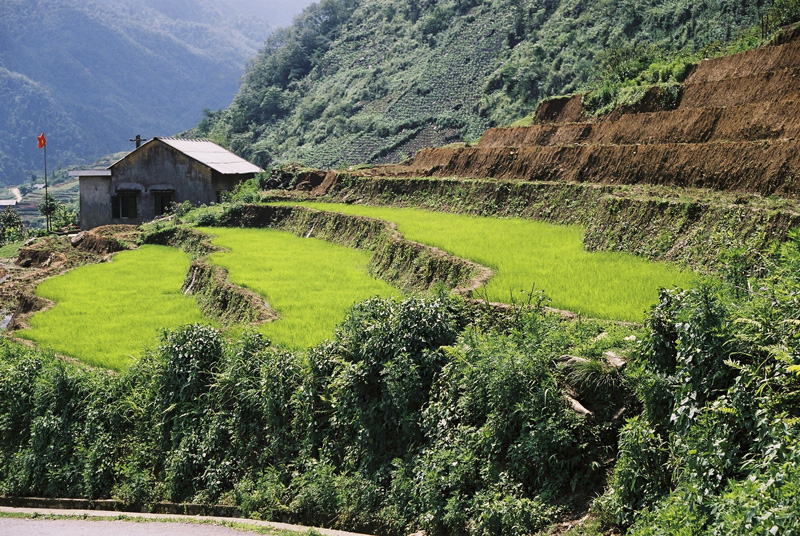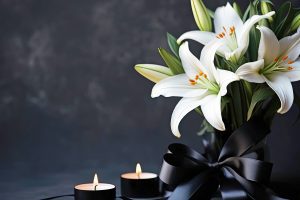Former combat Soldier, now Vietnam expert, Walter Pearson talks to Garden Drum about his attachment to the beauty of Vietnam and why he returns time and time again.
As I sat there in the almost silent jungle surrounded by armed men, ammunition and pyrotechnics, I was struck by the unusual beauty of the place.
This was 1969 and this was no rain forest lush with dripping foliage and a soft layered carpet of leaves. It was a dry thickish bushland with stunning 30 metre high trees and bed of dry leaves that crackled and screamed out with every step we took. No wonder the Viet Cong could hear us coming!
This particular tract of jungle was unique to the place we had had been sent to fight in in Viet Nam. And it was beautiful. Dappled light fell through a high canopy into the brushy undergrowth. Hues of yellow, orange and ochre dominated among the mostly pale green foliage. I took a photo of another soldier with a radio and felt completely at peace.
It took twenty years for me to return to Viet Nam after the war. I have continued to return at increasing frequency. After my second tour of duty during which I was an interpreter, dealing with Vietnamese, sharing their food and their stories and meeting our enemy face-to-face – I used to do visits to Prisoner Of War camps to interview enemy soldiers we had captured – Viet Nam re-shaped my life.
Although I tried to dismiss Viet Nam, I was constantly drawn back to it. I studied Chinese language, history and philosophy, reprising much of what I had learnt studying Vietnamese. I became a journalist and was sent on assignment to cover the newly erected Cross at the Long Tan Battle site. I was invited to lead tours to Viet Nam, to make a documentary film there and to search for our Missing In Action. Finally, I married and lived there in a rural town immersed in a fully Vietnamese lifestyle.
The more I was drawn to Vietnam, the deeper my understanding and more I wanted to help people see the true and authentic Vietnam I had uncovered. The longer I stayed in Viet Nam, the more engaged I became in its natural and artificial beauty – from dense hill-side jungles where a single towering tree covered in mauve flowers stood out against the dark green background to the carefully manicured and phong thuy (feng shui) balanced pagoda and temple gardens.
After more than a decade and a half of leading tours of veterans and people with an interest in the history of Viet Nam, I thought it was time to share the one thing that tour operators have neglected – that Viet Nam is redolent with natural beauty, stunning gardens and a truly diverse geography that Australians with a botanical or gardening interest would just love.
The Vietnamese attitude to gardens, agriculture and natural environment is similar to other Confucian countries but less intense than the Japanese and more pragmatic than the Chinese. Within Viet Nam, approaches vary reflecting the diverse influences of the ethnic groupings and climate in each region.
In the north, villages are walled and insular, gardens are neat, controlled and exploited to the maximum. In the south, a south-east Asian practice affects village layouts and the climate encourages a more casual approach to house gardens. In the centre, the old Imperial Capital of Hue manifests the Confucianist precepts in its Citadel and park-like Imperial Tombs.
Of course, it is impossible to move around Viet Nam and not be confronted by the turmoil of the twentieth century and the Thirty-Year War the Vietnamese fought for independence. By chance, the place where Australian troops participated in that war, is a stunning microcosm of Viet Nam itself with every form of agriculture and public and private gardens as well as a diverse topography, a range of religious and spiritual beliefs and a complex ethnic spread.
Moreover, the social, religious, ethnic and agricultural make up of Viet Nam affected the nature of the anti-colonial revolution and the war that went with it, something that persists even today.
So our tour – New Blooms and Old Days – takes you to Viet Nam at what could be called spring – the beginning of the wet season in north and south, just as the land begins to rejuvenate. You’ll be intrigued by the complexity of the society. We will uncover the special way Vietnamese live from birth, to marriage to death. You will see the beginning of the rice cycle, the harmony of formal gardens and the spontaneity of home gardens.
May is a pretty warm time of the year so we will go up into the cool mountains to Da Lat (1600m) home of the cut-flower industry in the south and to stunning Sa Pa (1500m) in the north.
However, after all these years travelling in Viet Nam, I have found it is not just the destinations but the interpretation of the place that makes the difference. You will get an insight to Viet Nam on this tour that will change your perceptions of a country that so poorly represented in the popular culture.
Love Vietnam and want to read some more? Read our Historic wonders of Hoi An article here.
This article was originally published on Garden Drum and is republished here under Creative Commons.



























Add Comment